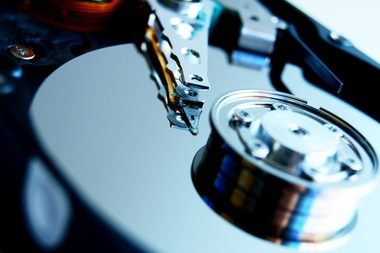Should you use “cloud” services to back up your files or should you use external hard drives? The opinions are divided. On the one hand, Cloud storage technology has matured to the point where it’s fairly reliable. On the other hand, External Hard Drives only cost you the one time, but your data isn’t always available everywhere. There are 2 different goals here and , depending upon how important one or the other is to you, will determine the best solution for you. Goal # 1 is the most important. If your data isn’t in at least two different places, then you will lose it. This is one of the pitfalls of using external hard drives. Most people use them incorrectly. If you want access to your data from anywhere, then goal #2 is equally important, although it requires a different solution. You need to decide how important this goal is to you. If you are constantly e-mailing files from your personal account to your work account (and filling up your quota), then you need to try out a synchronizing service.
Cloud Services for Backing Up
Carbonite Mozy ElephantDrive
Synchronization Services
GoDaddy DropBox Box.net Google Drive Pogo Plug
“I lost Internet access…”
What do you do when you have a loss of connectivity to your cloud storage? This can happen due to a power loss, a misunderstanding between you and your provider over the bill payment status, or simply being in a location that has very spotty Internet access. For this, an external hard drive or a USB flash drive or SD card may fit the bill. As long as you have power, you can backup your important work.
External Hard Drives
This is one area where external hard drives DO shine. It doesn’t matter if you have Internet connectivity or not. Your data is still safe and sound. Prices (according to the Best Buy circular in today’s paper- your mileage may vary) range from $9 for an 8GB flash drive to a $30 for a 32GB Flash drive. An external hard drive is $110 for a 1 TB drive or $170 for a 3 TB drive. The biggest blunder that people make when going this route is that they move all of their files over to the external drive and think, “Now I’m backed up. Now I’m safe”. The reality is that you haven’t changed anything. All of your files are still only in one place. The only thing that’s changed is that now you think you’re secure from data loss, when in actuality, you’re worse off. At least when you didn’t have the hard drive in place, you knew you weren’t covered. Now you think that you’re good when you’re not. Your data has to be in TWO places to be safe, not one. Cost-wise, you can pay for an external hard drive or a flash drive many times over with the cost of the online backup plans. There is one pitfall. Your files aren’t available via the Internet. A secondary pitfall is that if your house burns down, or a tornado or a hurricane hits it, then your backups are sitting right next to the computer that it’s backing up. I personally have my backup drive for my Mac (that’s at home) kept at work, to reduce this danger. The lack of Internet access for your files is where Pogo Plug comes in handy. I purchased the Classic version (with 4 usb ports) and have a drive hooked up to it. Once I connected it to my router for my network at home, I can access it locally as well as via the Internet.
A Two-Pronged Approach
I use both the Synchronizing files and the Flash Drives/ SD cards approach. The SD cards are for data that I need to access at any time and I use the Synchronizing option for convenient, don’t-need-to-think-about-it backups. Whichever solution you prefer, you need to back up your data that you care about. I would hate for you to miss out on the memories of newborn children or relatives that have passed away, due to theft or hardware failure. Think of it like an insurance policy and just do it. Let me know if I missed something. (Photo credit: Development via Shutterstock)
